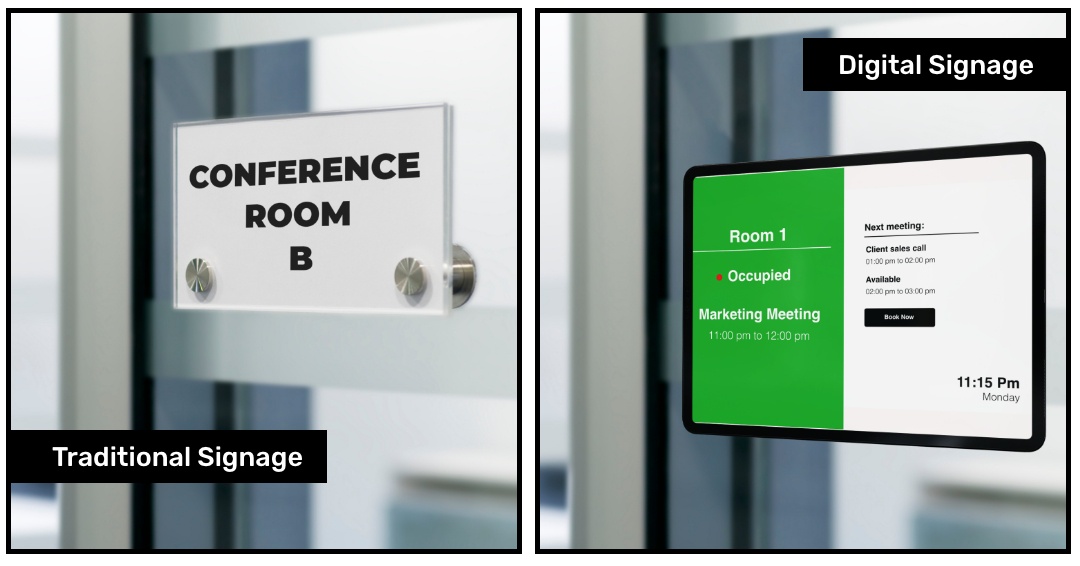
Digital Signage Comparison
Digital Signage Comparison In today's fast-paced digital era, businesses are constantly looking for innovative ways to engage their audience and create impactful brand experiences. One such solution that has gained immense popularity is digital signage. Digital signage refers to the use of digital displays, such as LCD screens, LED boards, and projectors, to convey information, advertisements, and messages to a targeted audience.
What is Digital Signage Comparison:
Digital Signage Comparison However, with numerous digital signage solutions available in the market, choosing the right one for your business can be a daunting task. In this article, we will conduct a comprehensive comparison of various digital signage solutions to help you make an informed decision and find the perfect fit for your business.
Display Technology:
The first aspect to consider when comparing digital signage solutions is the display technology. LCD screens, LED boards, and projectors are the most commonly used display technologies. LCD screens offer high resolution and are ideal for indoor environments with controlled lighting conditions. LED boards, on the other hand, are suitable for both indoor and outdoor applications, offering vibrant and dynamic displays. Projectors provide a large viewing area but require appropriate projection surfaces and controlled lighting conditions.
Content Management System (CMS):
An efficient content management system is crucial for managing and updating content on digital signage displays. When comparing digital signage solutions, evaluate the CMS's user-friendliness, scalability, and flexibility. Look for features such as remote content scheduling, real-time updates, and multi-platform compatibility. Some solutions offer cloud-based CMS, enabling easy access and management of content from anywhere, while others may require on-site servers.
Connectivity and Integration:
Consider the connectivity options and integration capabilities of different digital signage solutions. Ideally, the solution should support various content sources, including social media feeds, RSS feeds, live video streaming, and data integration from external systems. It should also offer connectivity options such as Wi-Fi, Bluetooth, and Ethernet for seamless content updates and control.
Hardware and Software Requirements:
Evaluate the hardware and software requirements of different digital signage solutions. Some solutions may require specific media players or dedicated hardware, while others may be compatible with off-the-shelf components. Consider factors such as maintenance, cost, and scalability when comparing different solutions based on their hardware and software requirements.
Scalability and Customization:
Consider the scalability and customization options offered by digital signage solutions. Depending on your business needs, you may require a solution that can accommodate multiple displays across various locations and allow for easy content management and updates. Look for solutions that offer templates, widgets, and design tools to customize the appearance and layout of your digital signage content.
Analytics and Reporting:
An effective digital signage solution should provide analytics and reporting features to measure the impact and effectiveness of your content. Look for solutions that offer data on audience engagement, content performance, and viewer demographics. These insights can help you refine your content strategy and optimize your digital signage campaigns.
Cost and Return on Investment (ROI):
Finally, compare the cost of different digital signage solutions and evaluate their potential return on investment. Consider factors such as upfront costs, ongoing maintenance expenses, and licensing fees. Additionally, assess the potential benefits the solution can bring to your business, such as increased brand visibility, improved customer engagement, and enhanced customer experiences.
Conclusion:
Choosing the right digital signage solution is essential for leveraging the power of visual communication in today's digital landscape. By considering factors such as display technology, content management system, connectivity, scalability, customization options, analytics, and cost, you can make an informed decision and find a solution that perfectly aligns with your business objectives. Remember, each business has unique requirements, so it's crucial to thoroughly evaluate different digital signage solutions before making a choice. With the right solution in place, you
Digital Signage Comparison How Its Work?
How Does Digital Signage Work? A Comparative Analysis of its Mechanics and Functionality:
Digital signage has revolutionized the way businesses communicate with their audience by providing dynamic and captivating visual displays. However, understanding how digital signage works is crucial for effectively implementing and maximizing its potential. In this article, we will delve into the mechanics and functionality of digital signage, comparing different approaches to help you grasp the inner workings of this powerful communication tool.
Hardware Components:
Digital signage systems consist of several hardware components that work together to create and display content. These components include display screens (LCD, LED, or projectors), media players or PCs, content servers, and various peripherals such as sensors, cameras, or touch panels. Each component plays a specific role in delivering content to the target audience.
Content Creation and Management:
The creation and management of content is a crucial aspect of digital signage. Content can range from images and videos to text and interactive elements. The content creation process involves designing visually appealing and engaging materials using specialized software or graphic design tools. Once created, the content is typically stored and managed through a content management system (CMS), allowing for easy updates and scheduling.

Content Distribution and Delivery:
Digital signage solutions employ various methods for distributing and delivering content to the display screens. One common approach is to use media players or PCs connected to the screens, which store and play the content locally. Another method involves using cloud-based solutions, where content is stored on remote servers and delivered to the screens via an internet connection. This allows for centralized content management and real-time updates across multiple locations.
Connectivity and Networking:
Connectivity is a critical component of digital signage systems. Wired or wireless connections, such as Ethernet, Wi-Fi, or Bluetooth, enable communication between the content management system, media players, and display screens. This connectivity facilitates content updates, remote monitoring, and control of the signage network.
Scheduling and Playlists:
Digital signage allows for flexible scheduling of content to be displayed at specific times or intervals. Content playlists are created to define the sequence and duration of each piece of content. Scheduling and playlist management can be done through the CMS or dedicated scheduling software. This feature ensures that the right content is displayed to the target audience at the desired time.
Interactivity and Sensors:
Some digital signage systems incorporate interactivity by using sensors or touch panels. This allows viewers to interact with the displayed content, triggering specific actions or accessing additional information. Sensors, such as motion sensors or proximity sensors, can be used to detect audience presence or engagement, triggering dynamic content changes or personalized experiences.
Analytics and Reporting:
Digital signage solutions often provide analytics and reporting features to track the performance and effectiveness of content. These insights help businesses understand audience behavior, measure engagement levels, and optimize content strategies. Analytics may include metrics such as impressions, dwell time, conversion rates, and demographic data.
Conclusion:
Digital signage systems are powerful communication tool that combines hardware, software, and content management to deliver visually captivating messages to a targeted audience. By understanding the mechanics and functionality of digital signage, businesses can make informed decisions when selecting the most suitable solution for their needs. Whether it's through local media players or cloud-based platforms, digital signage provides an immersive and dynamic platform for engaging audiences and enhancing brand experiences.


No comments yet